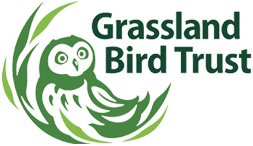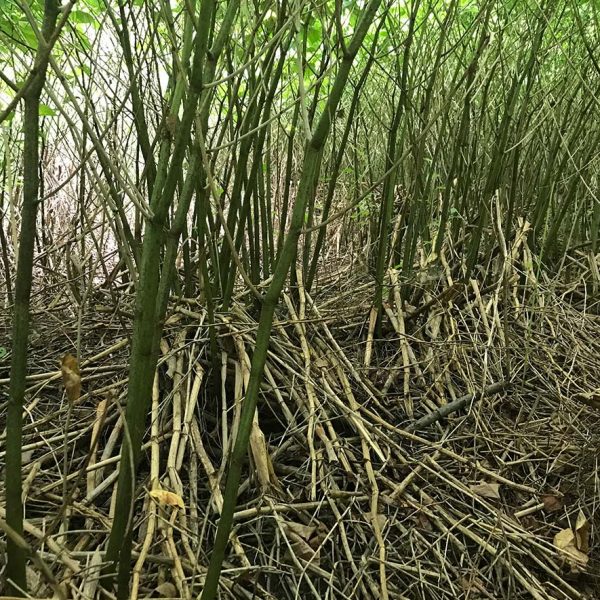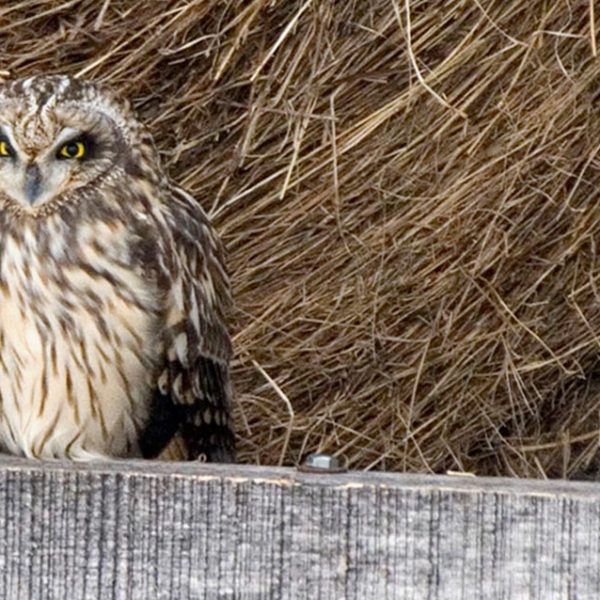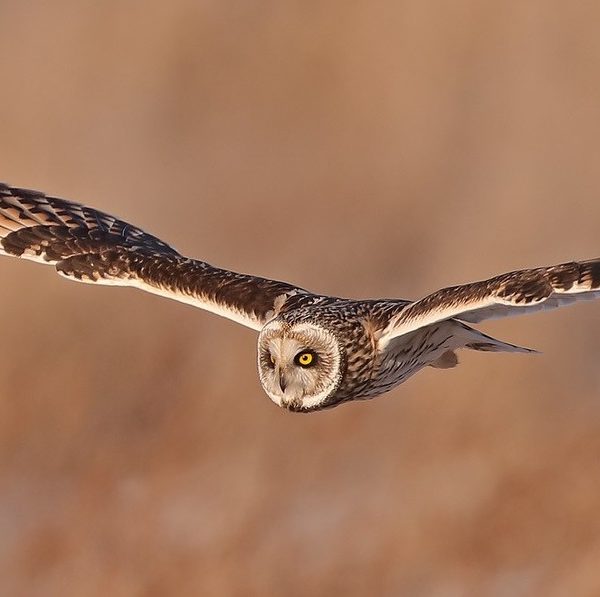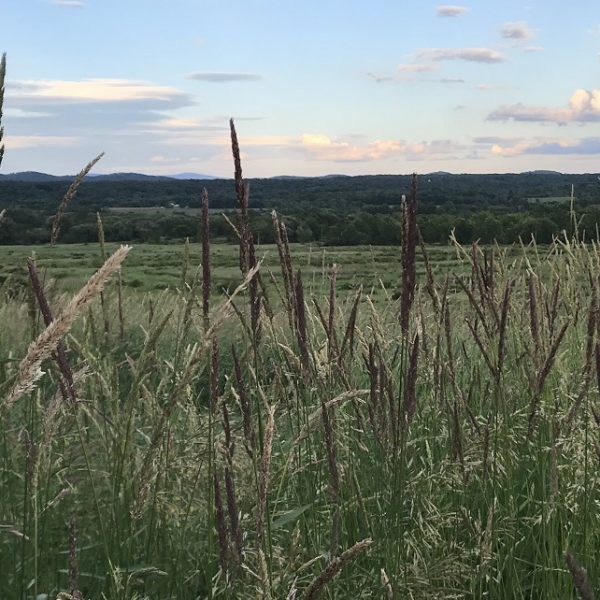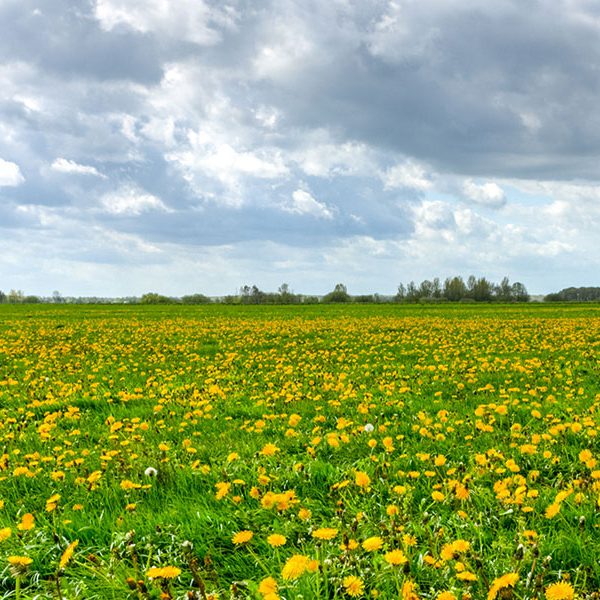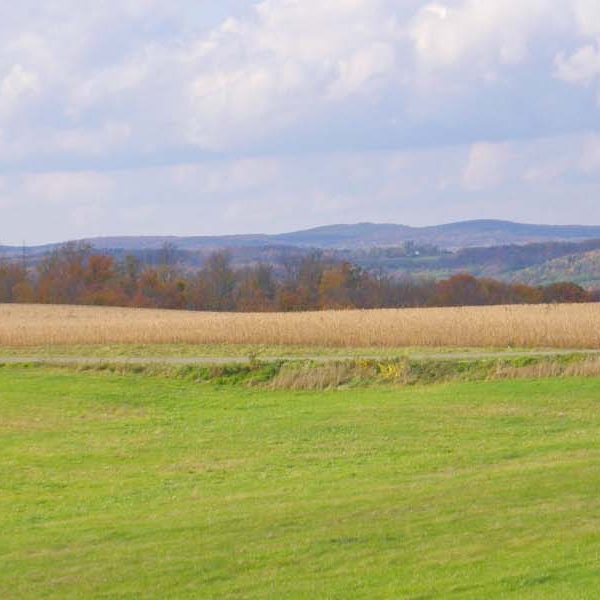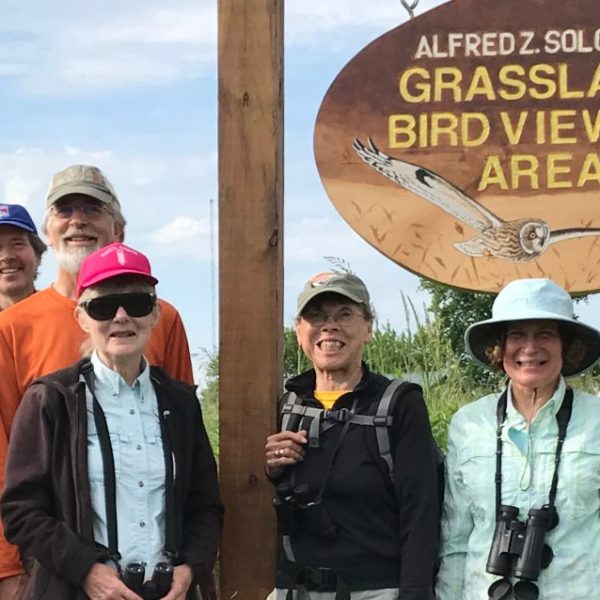Grasslands are the fastest disappearing habitat in the U.S., and grassland birds are disappearing right along with them!
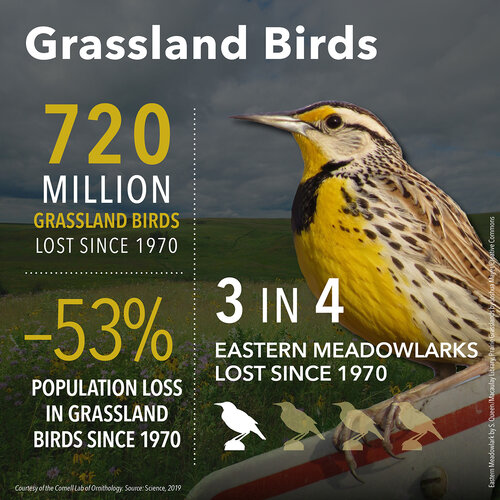
We’ve lost 3 billion birds in the U.S. and Canada over the last 50 years.
Grassland birds suffered the steepest declines, losing more than 700 million birds, or 53% of their population since 1970!
Short-eared owls, Northern harriers, Upland sandpipers, Eastern meadowlarks, Grasshopper sparrows and Bobolinks have seen their numbers plummet by 60% – 90% or more!
Grassland birds depend on large, open expanses of undisturbed fields and meadows to provide them with food and protection from predators.
Conserving grassland birds protects our food supply, preserves biodiversity and helps mitigate climate change!
Grassland Bird Conservation provides multiple benefits for humans:
- Grassland birds eat insects and rodents that cause disease and damage or destroy crops;
- Conserved grasslands support thousands of bees and butterflies that pollinate fruits, vegetables, hay and other crops;
- They also provide a home for dozens of other bird and animal species, including deer, turkey, rabbits, fox, voles, snakes and frogs;
- Grasses store carbon in their roots and the soil. Unlike forests, the majority of carbon is not released if the grasses catch fire, making them better able to withstand climate change.
GBT’s Conservation Achievements
Grassland Bird Trust (GBT) has conserved or helped conserve more than 240 acres of critical habitat in the Washington County Grasslands Important Bird Area (IBA). We own and manage 78 acres in the heart of the IBA at the site of our our Alfred Z. Solomon Grassland Bird Viewing Area.
GBT secured the passage of legislation requiring New York State to pay taxes on lands it owns in the IBA towns of Fort Edward, Argyle and Kingsbury.
GBT is working on new conservation projects across New York State that could save thousands more acres of critical habitat for endangered, threatened and rapidly declining grassland birds!
GBT is building new collaborations and initiatives to expand the pace and scale of grassland bird conservation across the Northeast U.S. and nationally!
Managing Conserved Grasslands
Most grassland birds nest on the ground. Some species prefer tall grasses that have not been cut or disturbed for at least a year while others prefer shorter grasses.
Conserved grasslands are usually managed to provide habitat for the greatest diversity of species. Fields are managed on a 3-year rotation; that is, one third of a site is cut each year.
Fields left uncut for more than three years begin reverting to shrub-land and lose their value as habitat for grassland birds. Visit our Managing Grasslands page to learn more!
—
ABOUT THE WASHINGTON COUNTY GRASSLANDS IBA
- This unique area is critical to the survival of Short-eared Owls in New York State!
- The Washington County Grasslands IBA supports 10 of 11 of NY’s most imperiled grassland bird species!
- It is listed as a regional conservation priority in the NYS Open Space Plan
Yet only 544 acres of a 2,000 acre core area of critical grassland habitat have been protected!
